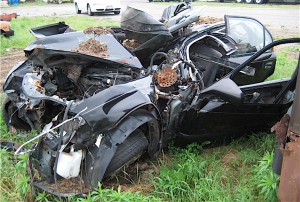
The National Safety Council is predicting 421 will die in traffic accidents during the long Labor Day weekend.
With the Labor Day holiday coming up, Americans are expected to take to the roads in record numbers, and the National Safety Council expects that will mean the highest number of traffic fatalities in a decade during the long weekend.
The weekend begins Sept. 1 and ends Sept. 4, according to the safety group.
The NSC estimates 421 people will be killed and another 48,400 injured seriously enough to require medical attention in car crashes during the weekend — its highest forecast since 2008. It’s also 11% higher than the average number of deaths for the holiday weekend.
While AAA no longer provides official estimates of the number of travelers on U.S. roads during the holiday weekend, its last estimate in 2015 was 35.5 million vehicles.
(To see more about how Hurricane Harvey could drench U.S. motorists with higher gas prices, Click Here.)
“If we were to estimate the total travel volume for Labor Day, purely based on the rate of growth for Memorial Day and Independence Days, a fair estimate would be that more than 37.25 million Americans will travel for Labor Day 2017,” Mark Jenkins, AAA senior PR program coordinator, told Tampa Bay Newspapers, adding that it would be the highest number since 2008.
“Many families will use Labor Day weekend to make their final summer memories before kids return to school,” said NSC President and CEO Deborah A.P. Hersman.
“We want that last hurrah to be fun, not fatal. When you are on the roads, be alert and drive defensively – making smart decisions could be the difference between a relaxing long weekend and one spent in the emergency room.”
(Click Here to see why new car buyers are less happy with their purchases this year.)
The group offers tips for safer Labor Day travel including:
- Buckle up on every trip in every seating position
- Make sure children are properly restrained in the appropriate seats for their height, weight and age
- Designate an alcohol and drug-free driver or arrange alternate transportation
- Get plenty of sleep and take regular breaks to avoid fatigue
- Never use a cell phone behind the wheel, even hands-free
The NSC has given states grades for their active involvement in finding ways to prevent traffic deaths.
States receiving an “A” for road safety have strong laws – including texting bans, primary seat belt laws and sobriety checkpoints – in place to help protect drivers passing through. The seven states that received an “A” are Illinois, Louisiana, Washington, D.C., Delaware, Maine, West Virginia and Maryland.
(To see more about the expected August sales bump, Click Here.)
Conversely, nine states – Nevada, Florida, Mississippi, Idaho, Wyoming, Arizona, Missouri, South Dakota and Montana – received an “F”.

